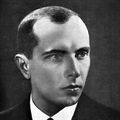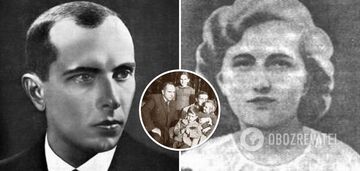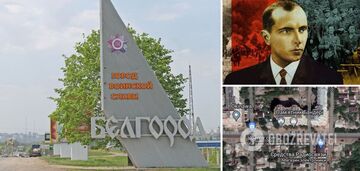
Stepan Bandera
Stepan Andreevich Bandera is the leader of the OUN-B wire.
Brief biography
Stepan Bandera was born in the village of Stary Ugrinov in Ivano-Frankivsk region, January 1, 1909.
In 1928, some time after graduating from school, Stepan Bandera moved to Lviv, where he began his studies at the High Polytechnic School (now - National University "Lviv Polytechnic").
In 1932-1933 Stepan Bandera acted as a regional guide of the OUN, and in 1933 he was fully appointed to this position, heading the OUN of Western Ukraine.
In this capacity Bandera took part in the famous Vienna Conference, which was held in Prague in 1932.
Under the leadership of Stepan Bandera, the OUN committed three of the most notorious political murders in its history:
Theassassination of Alexei Mailov, an NKVD agent and secretary of the Soviet Embassy in Lviv.
The assassination ofBronislaw Peracki, the Polish Minister of the Interior.
Assassination ofGadomski, the so-called school curator of Poland.
In 1934 Stepan Bandera was arrested by the Polish police. At the famous Warsaw trial Bandera was sentenced to death, which was later commuted to life imprisonment.
In 1939, when the guards and administration of the prison in which Bandera was imprisoned escaped because of the critical situation at the front, Stepan Bandera was released together with the other prisoners.
At the beginning of 1940 he arrived in Rome, to his sibling Alexander Bandera.
At the beginning of 1941 Stepan Bandera was elected head of the OUN Wire. However, soon after the proclamationof the "Act of the Renewal of the Ukrainian State", Stepan Bandera was captured by the Nazis and imprisoned in the concentration camp "Sachsenhavzen". He was released only in 1944.
In 1945, Stepan Bandera, together with Shukhevych and Stets'ko, were again elected to the Bureau of the Wire, and later again led the OUN.
The last years of his life Stepan Bandera spent with his family in Munich, Germany, hiding under a false name. He was killed on October 15, 1959 by KGB agent Bogdan Stashinsky.
Fame in Ukraine
Stepan Bandera's name became a symbol of the liberation and nationalist movement in Ukraine, and remains so to this day.
Monuments to Stepan Bandera have been erected in many cities of Ukraine. In addition, there are six Stepan Bandera museums in the world.
After the Revolution of Dignity, in the process of decommunization, a number of streets and squares in various Ukrainian cities were named after Stepan Bandera, including Stepan Bandera Avenue in Kiev.





